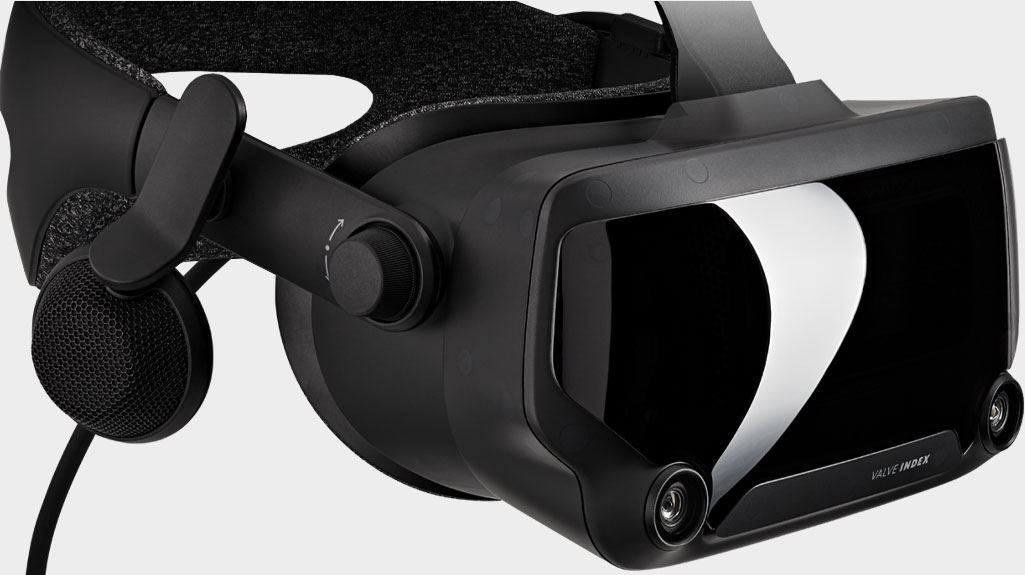Star Wars: Squadrons VR setup tips
Star Wars: Squadrons is stunning in VR, if you can overcome some setup issues.

I'm still feeling a little queasy after playing Star Wars: Squadrons in VR. This game is not for the faint of stomach—after playing some 20 hours of Squadrons on my monitor, I wasn't prepared for how different it would feel doing barrel rolls and flying 'upside-down' in VR. But wow, is it cool.
Compared to playing on a monitor, my cockpit felt huge. I could look straight up to see the TIE Fighter I was trying to track, and I had to sit up straight to peer over the instrument panel down the nose of my X-Wing. The peripheral vision is absolutely an advantage in battle, but it also felt like information overload. I found it much harder to track other human pilots in multiplayer.
Also hard: Getting Star Wars: Squadrons to play nice with VR in the first place. I ran into some unintuitive issues getting Squadrons up and running on my Oculus Quest via the Link cable, and other players have been reporting issues with SteamVR and headsets like the Index, too.
If you're looking to play Star Wars: Squadrons in VR, here's what you need to know before you start.
Star Wars: Squadrons VR Oculus setup
If you're using an Oculus Quest, connect it to your PC with a USB C cable, turn it on, and put it on briefly; you should get a prompt to enable Oculus Link with your PC. You don't have to worry about this process with the Rift.
With the headset plugged in, boot up Star Wars: Squadrons and hit Esc to open the options menu. Here you should see a VR Settings menu if the game detects your headset. In the VR settings menu, you'll see a button to "Toggle" VR. Click that button, and the game should appear on your headset. You'll need to hit Spacebar (or a button on your controller or flight stick) to confirm the switch to VR mode.
This process doesn't always go smoothly, and I had to figure out some fixes the hard way.
Keep up to date with the most important stories and the best deals, as picked by the PC Gamer team.
- Important: Make sure you have the game set to Borderless mode. You can do this in Options > Video > Screen settings. When I tried to switch to VR in Fullscreen mode, Squadrons crashed to desktop every time.
- If you get a black screen when you toggle VR: On the Oculus Quest, try unplugging the headset and plugging it back in, then enabling VR again. The game got "stuck" for me trying to make the switch, but this fixed it.
I've also read about other issues online. Here are some things to be aware of if you're trying to play on an Oculus headset:
- Some players have complained about blurriness in VR. In my experience VR isn't as sharp or detailed as it is on my monitor, but didn't look blurry.
- The Steam version reportedly does not use the Oculus SDK natively, but runs through SteamVR. If you have poor performance, consider refunding and buying on Origin instead.
- Despite powerful hardware, some systems are having trouble getting the game to run well, especially in VR. You may just have to wait for patches or driver updates to resolve this. In the meantime, you can turn down the graphics settings.
Star Wars: Squadrons VR Index/Vive setup

I haven't personally tested Squadrons via a SteamVR headset, but according to player reports it hasn't been a smooth launch. The Valve Index has some significant advantages over my Oculus Quest. The higher resolution and especially the 120 Hz refresh rate (vs the Quest's 72 Hz) should be a big deal for anyone sensitive to VR motion sickness like me. But hitting a steady 120Hz, especially in VR, is also much more of a challenge for your hardware.
You should be able to launch Squadrons from inside SteamVR Home, but there seem to be issues currently preventing it from running well for many.
- Some Steam players are reporting the game being locked to 60 Hz or 30 Hz, even when Squadrons is set to run at 144 fps. This seems to be a widespread bug that will likely require a patch to fix.
- One solution from players: Running the Vive Index at 120 Hz, but then limiting the in-game framerate to 60 fps. While not ideal, this avoids the high FPS performance issue.
- Also make sure to check your SteamVR supersampling settings. A higher setting like 200% could mean an even bigger performance hit, since you're rendering more pixels.

Wes has been covering games and hardware for more than 10 years, first at tech sites like The Wirecutter and Tested before joining the PC Gamer team in 2014. Wes plays a little bit of everything, but he'll always jump at the chance to cover emulation and Japanese games.
When he's not obsessively optimizing and re-optimizing a tangle of conveyor belts in Satisfactory (it's really becoming a problem), he's probably playing a 20-year-old Final Fantasy or some opaque ASCII roguelike. With a focus on writing and editing features, he seeks out personal stories and in-depth histories from the corners of PC gaming and its niche communities. 50% pizza by volume (deep dish, to be specific).

